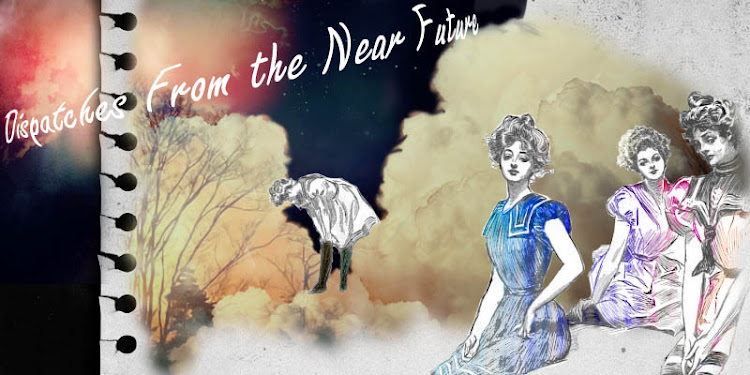 It was originally my intention to display the hats here by year, hoping to achieve some semblance of order. After my initial week of research, however, I began to realize that this will only be somewhat possible. I will most likely jump back and forth in time, though hopefully not within posts.
It was originally my intention to display the hats here by year, hoping to achieve some semblance of order. After my initial week of research, however, I began to realize that this will only be somewhat possible. I will most likely jump back and forth in time, though hopefully not within posts.Some hats and bonnets have all their mysteries unlocked by the rather helpful tags pinned to them, condemning certain ribbons unoriginal to their designs or claiming another unworthy of being keptonce a more alluring sample comes along.
Our more recent additions to the collection still not only lack accession numbers, but any sort of descriptive tags. This is the task I look most forward to this week.
 One particular hat I was able to trace back to the department store in which it was sold: Woodward & Lothrop Importers. I had guessed the hat to be from the 1900’s and was gratified to find that the main branch of the department store opened in Washington, DC—where this particular hat is from—in 1887, justifying my guess. Kiki has suggested that the hat is fr
One particular hat I was able to trace back to the department store in which it was sold: Woodward & Lothrop Importers. I had guessed the hat to be from the 1900’s and was gratified to find that the main branch of the department store opened in Washington, DC—where this particular hat is from—in 1887, justifying my guess. Kiki has suggested that the hat is fr om c1910 and I quite believe her.
om c1910 and I quite believe her.There are many questions to ask of this hat. My first thought was “French, it must be French,” but perhaps that is simply the genius of the design, aided by the inside tag, which reads “Woodward & Lothrop Importers”, suggesting to the buyer that this is European, and therefore—to the Edwardian American, who takes all her fashion advice from stylish Europe—will make her look sophisticated, chic.
Instead of having been made in the fancy boutique in France one may be meant to imagine, perhaps this hat was commissioned by the store and simply made in bulk in a factory somewhere in the United States. (Or perhaps they had begun outsourcing at the time?) As Woodward & Lothrop closed in 1995, along with its subsidiary Woolworths, which you may remember, this question may not be answered, but I intend to look in to it.
A second hat of a similar nature has also been donated and, having looked through books of advertisements from the same period (c1910, that
 is). Considering the circumference of the headsize opening (see term here), both hats may have been intended for children. Fig. 524 shows an equivalent for a woman.
is). Considering the circumference of the headsize opening (see term here), both hats may have been intended for children. Fig. 524 shows an equivalent for a woman. Another probable reason for the small circumference of the headsize opening could be that, given the hairstyles of the time, the hat could have
 sat upon the head instead of being pulled over the crown. Kiki believes the latter while I believe the former. Looking in the advertisement to the left, the hat does sit around the crown of the child's head.
sat upon the head instead of being pulled over the crown. Kiki believes the latter while I believe the former. Looking in the advertisement to the left, the hat does sit around the crown of the child's head.Note the ruching on the underside of the brims of both bonnets. Relating this particular bonnet to the period is the reflection in clothing for both women in girls of layers of lace, hanging off the form (as seen below). While Harper's Bazaar declared the bonnet dead in 1892, this advertisement, from nearly ten years later clearly states that it is selling a hat in the poke bonnet style.
Furthermore, this style of bonnet seems to only appear on young women or older girls, as post adolescent women appear more often to be adorned in larger, more decorative hats.





No comments:
Post a Comment